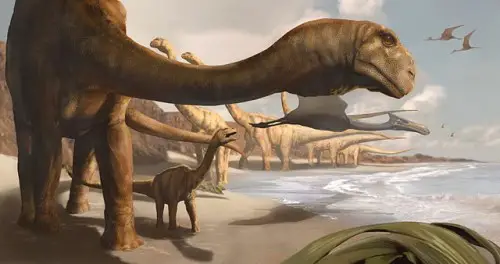Ancient sea creatures’ hair could help repair damaged muscles
New research has come out of the UK stating that a sea species of tiny hairs going back as many as five hundred million years is capable to repair damaged muscles. According to the British scientists, such plant-like creatures also known as tunicates possess incredible regeneration properties.

The star-shaped holes (Catellocaula vallata) in this Upper Ordovician bryozoan represent a tunicate preserved by bioimmuration in the bryozoan skeleton.
Researchers have noticed that these creatures have microscopic hairs on them which contain some sort of a compound that has the ability to function as building blocks that could mend damaged muscle tissue.
This is a wonderful discovery as it might have the potential to treat patients suffering from serious injuries and even permanent disabilities.
Scientists at Manchester University decided to look for new medical materials in the world of nature. Biomaterial experts discovered that on the ocean bed there are certain creatures with whisker-like hairs that contain a compound named cellulose.
Everybody knows that cellulose can be found in almost any plant but the difference is that the above-mentioned hairs have the power to “encourage” the cells of damaged muscles to glue back together.
Stephen Eichorn, James Dugan and Julie Gough, all biomedical experts, succeeded in chemically extracting those minuscule whiskers. When aligned in order to be parallel, these hairs helped the cells of a damaged muscle to heal rapidly.
Dr. Eichorn’s belief is that the cellulose provided by the sea creatures could be capable to “fix” a muscle or even “build” a muscle from scratch.
Here is what he stated: “Although it is quite a detailed chemical process, the potential applications are very interesting.
“Cellulose is being looked at very closely around the world because of its unique properties, and because it is a renewable resource, but this is the first time that it has been used for skeletal muscle tissue engineering applications. There is potential for muscle precision engineering, but also for other architecturally aligned structures such as ligaments and nerves.”
This tiny creature grows in a large assortment of sizes and shapes and can be found on ocean floors all over the world. Scientists state that this ancient sea creature also contains anti-viral elements which could be efficient in the battle against several types of cancer.

